In this third lesson on bass fills we’re going to look at chromatic notes. Chromatic notes are commonly used over dominant 7 chords (like our A7) and can add a lot of melodic interest and spice into your playing.
What The Hell Are Chromatic Notes?!
So first of all, what are chromatic notes? Well, chromatic notes are notes outside of our main tonality or key. This is the opposite of diatonic notes which are in key. So diatonic is in key, chromatic is out of the key.
So think of the key of C major. Our main palette of notes will be using the C major scale: C D E F G A B. These are the diatonic notes.
Any other notes, C# or Db, D# or Eb, F# or Gb, G# or Ab, A# or Bb. These are all chromatic. Simple.
Out Of Key = Bad?
Now you might be thinking, well that’s all well and good but if Chromatic notes are outside of the key, aren’t they going to sound weird or just plain bad when we use them in our playing?
Well the answer is not at all and it’s actually rare you’ll ever hear a complete modern song or piece of music made up entirely of diatonic notes. You’ll hear chromatic alterations to chords and chromatic melody notes all the time and they can add a lot of interest to our music. You just have to know how to use them.
Famous Chromatic Riffs
So, as an example of how common chromatic notes are in modern music, here are three famous riffs making use of chromatic notes:
Sunshine Of Your Love – Cream
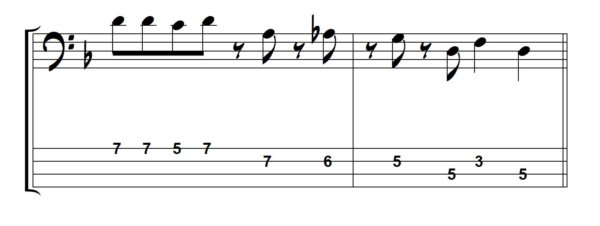
This riff is in the key of D minor but we have an Ab in there. There is no Ab in any D minor scale so this ‘blues’ note is chromatic.
Sir Duke – Stevie Wonder

In the ascending line we have a D natural between the C# and the D#. We are in the key of B Major, so again this is a chromatic note.
Ain’t No Stopping Us Now – McFadden & Whitehead

Here we’re in the key of Bb minor and this riff makes use of both a B natural and an E natural. Two VERY chromatic notes!
Why They Work
So can you see anything in common there with all three of those riffs? Well, the chromatic notes in there were used in passing. We didn’t linger on them.
Chromatic notes contain a lot of dissonance and tension, which is great, but tension begs to be released and because we’re just rhythmically skipping through them we don’t draw much attention to them. They just add that nice bit of spice to the line.
Let’s Try Some Bass Fills!
Just as in the previous lesson we’ll be working over a I-VI-II-V progression in the key of D Major: Dmaj7 – Bm7 – Em7 – A7
Our backing track and bass line are as follows:
Chord Tones, Scales & Melodic Devices
In the first lesson we used chord tones for our fill so that was using the arpeggio of A (The notes A C# E and G)

In the 2nd lesson we filled in the gaps between those notes with the A Mixolydian scale which gave us A B C# D E F# G.
 Now in adding chromatic notes, the notes between those scale tones, we’re going to use two simple melodic devices in the shape of passing notes and approach notes. That way we get to learn the application as opposed to just what the notes are.
Now in adding chromatic notes, the notes between those scale tones, we’re going to use two simple melodic devices in the shape of passing notes and approach notes. That way we get to learn the application as opposed to just what the notes are.
Again, if you need any help understanding chord tones or how they relate to the bass fingerboard, be sure to check out the Chord Tone Essentials course. You’ll learn the construction of EVERY chord you’ll ever encounter, how to view them over the entire neck of the bass and how to apply them in your basslines, fills and solos. Click Here For More Information!
Chromatic Passing Notes
So for a chromatic passing note we’re simply going to pass from one scale note to the next using the chromatic note in between. Here are some examples of chromatic passing notes in our A Mixolydian scale:

It’s also worth bearing in mind that these passing notes are easier to use when we’re moving towards a chord tone.
For example, the flattened second, the Bb, is much more suited to approaching the root note (a chord tone) than it is to approaching the second degree (a non chord tone) so I’d be more likely to use it in descent. Try playing up and down this scale line and see if you can hear the difference:

Chromatic Approach Notes
As well as passing notes we can also use Approach Notes. These are even easier to understand because all we do is approach a chord tone chromatically from above or below.
So if we take our chord tones of A7 (A C# E and G) we can use a single approach note for each chord tone:
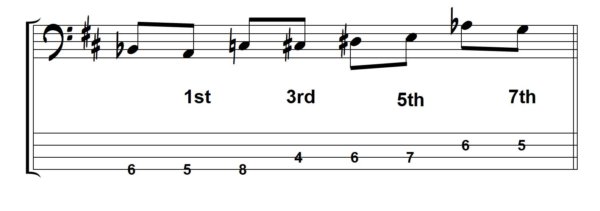
And now let’s try a double approach (approaching with 2 notes above or below):
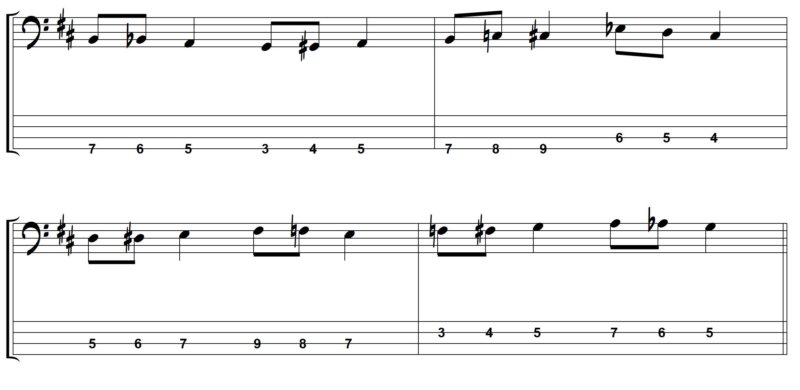
Bass Fill #1
This first bass fill makes use of a popular approach note: The Minor 3rd to the Major 3rd.

Bass Fill #2
This bass fill contains a chromatic passing note from the 4th to the 5th and the minor 3rd to the major 3rd.
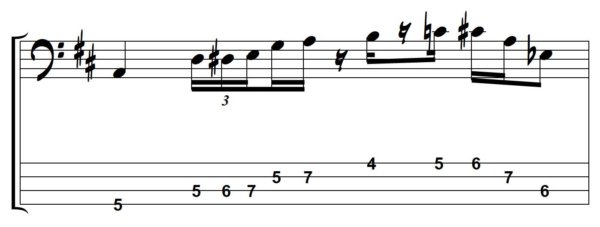
Bass Fill #3
This fill strings together passing notes between the 2nd and 3rd and the 4th to the 5th. The final note is a chromatic approach leading back into the tonic of the key in the next bar.
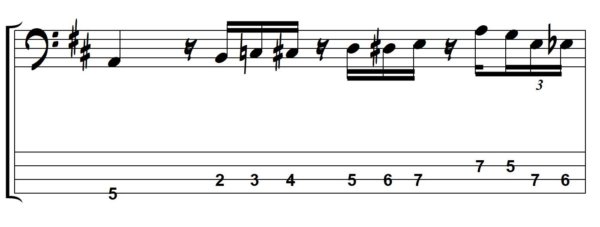
Bass Fill #4
In this final fill we have more passing notes, this time in descent.
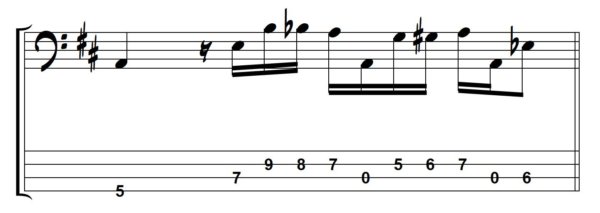













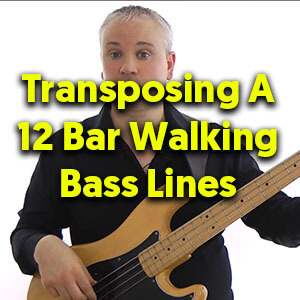
Hi Mark. Is there a specific reason why you have chosen the A7 scale to find out the chromatic notes of that D major chord progression ? Why not simply use the root (D major) scale ? Thanks.
This is because we’re looking at the chord tones of A7 as our foundation. This is why everyone stresses learning chord tones over scales. The notes of the chord you are playing over are the main points of resolution and the ‘safe’ notes. This means you need to see everything relative to those chord tones as the progression moves along. When we get to A7, we are thinking A7 not D major.
because we are starting and ending on A7. bass is different than lead guitar, a solo would be in D for this but we as bass players gotta “show” what chord the rest of the band is playing
Really good stuff!
Very good explanationing – thank you.
your lessons are so interesting, and very ” straight to the point”, not like some others in youtube.
No doubt, you are the best teaching in the web. I had liked too your last sunday live streaming.
Thanks Mark, i found your explanations very helpfull
Thx for all u doo Mark. I ALWAYS go to yoo first! Regarding this chromatic walking. I love the Chrome bit. Its so easy/relevant. I played Blues for 5+yrs and I cant believe that I didnt kno/use these KILLER flavors…
Thanks Mark,I’ve gone to your site exclusively,Ihave learned more in the last couple of years than I have in the previous 10.
For fill #4, what the tab/dots says and what you play in the video don’t match. At beat 3 into beat 4, the musical notation shows an ascending line from G to A, but in the video, you show/play a descending line, from A to G. Both lines work fine, and I’ve found this material really useful.
CREAMS CROSSROAD HAS IT AS WELL!!